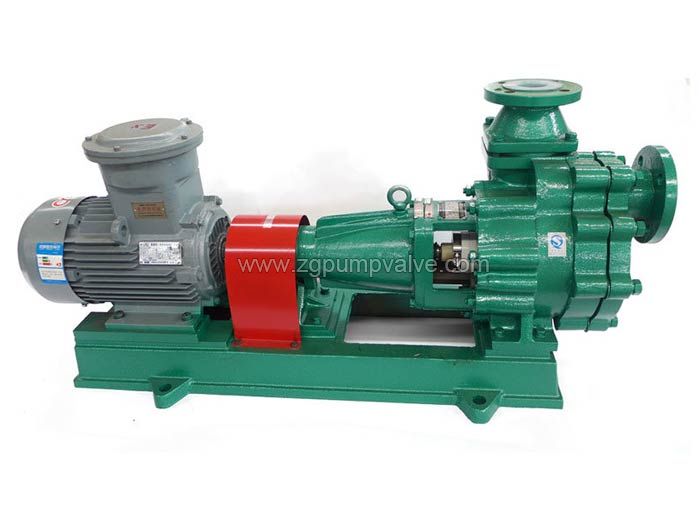Learn - Oct. 20, 2020
Because the liquid continuously impacts the cascade in the volute and is continuously broken by the impeller, it is stirred and mixed strongly with the air to form a gas-water mixture, and it flows continuously so that the gas and water cannot be separated. The mixture is peeled off by the tongue at the exit of the volute and enters the separation chamber along the short tube. The air in the separation chamber is separated and discharged by the outlet pipe, while the water still flows to the outer edge of the impeller through the left and right return holes, and is mixed with the suction pipe air. Repeating this cycle gradually exhausts the air in the suction pipeline, allowing water to enter the pump, completing the self-priming process.
The working principle of the internal mixing self-priming pump is the same as that of the external mixing self-priming pump. The difference is that the return water does not flow to the outer edge of the impeller, but to the inlet of the impeller. When the internal-mixing self-priming pump is started, the return valve at the front and bottom of the impeller must be opened to make the liquid in the pump flow back to the impeller inlet. The water mixes with the air from the suction pipe under the action of the high-speed rotation of the impeller to form an air-water mixture and discharge to the separation chamber. Here the air is discharged and water returns from the return valve to the impeller inlet. This is repeated until the air is exhausted and water is sucked in.

The self-priming height of the self-priming pump is related to factors such as the front seal clearance of the impeller, the number of revolutions of the pump, and the liquid level of the separation chamber. The smaller the front seal clearance of the impeller, the greater the self-priming height, generally 0.3~0.5 mm; when the clearance increases, the pump head, and efficiency will decrease except for the decrease of the self-priming height. The self-priming height of the pump increases with the increase of the circumferential speed u2 of the impeller, but when the maximum self-priming height is reached, the number of revolutions increases, and the self-priming height no longer increases. At this time, the self-priming time is only shortened; when the number of revolutions When descending, the height of self-priming decreases. Under other conditions unchanged, the self-priming height also increases with the increase of the water storage height (but it cannot exceed the optimal water storage height of the separation chamber). In order to better mix the air and water in the self-priming pump, the blades of the impeller must be smaller to increase the pitch of the cascade; and it is advisable to use a semi-open impeller (or an impeller with a wider impeller channel). It is convenient for the return water to shoot deeply into the impeller cascade.
Most of the self-priming pumps are matched with internal combustion engines and are mounted on movable carts, which are suitable for field operations.
The above information is provided by the multistage pump manufacturer.
Four Common Cooling Methods for Deep Well Submersible Pump(Part 1)
Application of High Temperature Molten Salt Pumps in the Concentrating Solar Power Plant
What to Pay Attention to When Installing a Self-Priming Pump?
Application of High-temperature Hot Water Circulation Pumps in Metallurgical Industry
Four Common Cooling Methods for Deep Well Submersible Pump(Part 2)